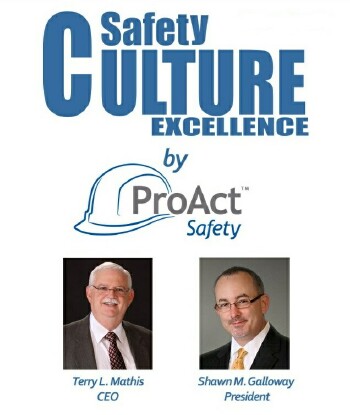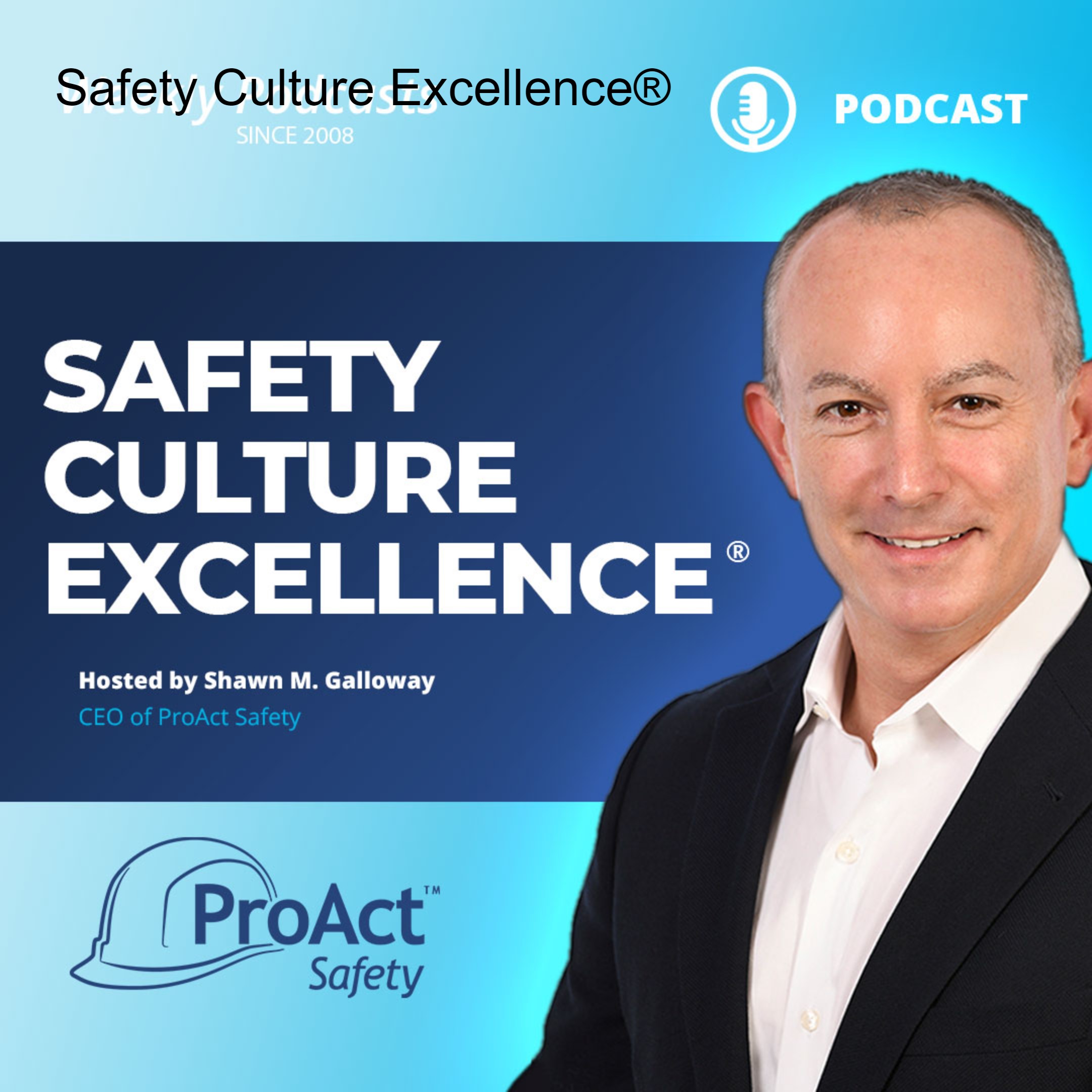Episodes

Wednesday Apr 08, 2015
Training vs. Education
Wednesday Apr 08, 2015
Wednesday Apr 08, 2015
More and more organizations are using computer-based training (CBT) modules. Most started using them for OSHA-required yearly refresher training. The CBT approach had some advantages: workers could attend individually rather than in a classroom with multiple students and an instructor; the individual training approach caused less disruption of business activities than a classroom approach; the training was self-paced so everyone could move through the materials at their own pace; the modules could include testing for knowledge levels; and the CBT could keep current rosters of who had completed the various modules.
Then organizations expanded the use of CBT into more questionable areas. Along this path, someone forgot that CBT is education; not training. You can impart information via computer but you cannot build manual skills. Relying on CBT to teach manual job skills or even basics such as fire-extinguisher use is only a partial approach. Students end up having knowledge without skills. If the CBTs are followed up with on-the-job training or classroom simulations, the knowledge can begin to be translated into skills. Without such follow-up, CBTs can simply create a false sense of competence that can, and has, resulted in serious safety incidents.
-Terry L. Mathis
For more insights, visit
www.ProActSafety.com
Terry L. Mathis is the founder and CEO of ProAct Safety, an international safety and performance excellence firm. He is known for his dynamic presentations in the fields of behavioral and cultural safety, leadership, and operational performance, and is a regular speaker at ASSE, NSC, and numerous company and industry conferences. EHS Today listed Terry as a Safety Guru in ‘The 50 People Who Most Influenced EHS three consecutive times. He has been a frequent contributor to industry magazines for over 15 years and is the coauthor of STEPS to Safety Culture Excellence (2013, WILEY).


Wednesday Apr 01, 2015
Probability: Group Experience
Wednesday Apr 01, 2015
Wednesday Apr 01, 2015
A worker using the wrong tool for a job injures his hand. Another worker has used the same wrong tool numerous times with no injury. One worker retires having used this tool his whole career with no injury and another retiree has had three injuries related to using that tool. Each experience is different, and thus, each perception of the risk is different. Some think the practice is dangerous and some think it is not. Who is right and who is wrong?
We express a range of experience mathematically by calculating probability. With enough data points we can establish a pattern to this risk that may not be obvious to anyone who is a data point, but is accurately describing the experience of the large group. Sharing the findings of a probability study can actually change and norm the perceptions formed by differing experiences within the group. This new perception can more accurately describe the risk and encourage taking precautions against the risk even among those whose experience hasn’t detected the possibility of accidental injury. Perceptions, if not thus managed, will vary by experience. Managing the accuracy of perceptions is a powerful tool for improving safety performance that many organizations have not utilized.
-Terry L. Mathis
For more insights, visit
www.ProActSafety.com
Terry L. Mathis is the founder and CEO of ProAct Safety, an international safety and performance excellence firm. He is known for his dynamic presentations in the fields of behavioral and cultural safety, leadership, and operational performance, and is a regular speaker at ASSE, NSC, and numerous company and industry conferences. EHS Today listed Terry as a Safety Guru in ‘The 50 People Who Most Influenced EHS three consecutive times. He has been a frequent contributor to industry magazines for over 15 years and is the coauthor of STEPS to Safety Culture Excellence (2013, WILEY).


Wednesday Mar 25, 2015
Safety vs. Liability
Wednesday Mar 25, 2015
Wednesday Mar 25, 2015
I see more and more safety procedures written by corporate attorneys and their staff. While legal exposure is a real business consideration that deserves attention, so is safety. If the procedures are written in language the average worker can’t understand, or are too complex to remember, they have little chance of actually being implemented. What corporate attorneys need to understand is that a written procedure is not an insurance policy against government regulators, especially if the procedure doesn’t become common practice. Stiff fines have been given to organizations with excellent documentation but common practice that doesn’t match. The people in the field need to walk the talk or the exposure is still there.
Sometimes all that is needed is a shorter version of the procedure aimed at worker terminology and mapped out into an implementation plan. The legal document can still be in place as the organizational goal, while the shorter document is a practical attempt to turn the goal into reality in the workplace. I have found regulators much more understanding of performance that falls short of the ideal if there is a plan in place to make it happen. Attorneys: work with the safety staff to make procedures practical and applicable as well as liability limiting.
-Terry L. Mathis
For more insights, visit
www.ProActSafety.com
Terry L. Mathis is the founder and CEO of ProAct Safety, an international safety and performance excellence firm. He is known for his dynamic presentations in the fields of behavioral and cultural safety, leadership, and operational performance, and is a regular speaker at ASSE, NSC, and numerous company and industry conferences. EHS Today listed Terry as a Safety Guru in ‘The 50 People Who Most Influenced EHS three consecutive times. He has been a frequent contributor to industry magazines for over 15 years and is the coauthor of STEPS to Safety Culture Excellence (2013, WILEY).


Wednesday Feb 25, 2015
The Program Mentality
Wednesday Feb 25, 2015
Wednesday Feb 25, 2015
In spite of some progress toward strategic thinking, safety efforts remain largely program- or process-minded. This is kindred thinking to the “more is better” and the “silver bullet” mentality of the past three decades. Organizations think the new program is going to be the add-on to their existing efforts producing the magic that gets them to zero. Consultants and trainers answer this demand and produce product-and-process things to sell to organizations. The chase to fail less this year than last goes on.
The vast majority of organizations we assess do NOT need a new program or process. In fact, most need to get rid of some of their existing ones rather than add new ones. More is not better; only better is better, and adding on to failing or falling-short efforts is not the answer. None of the programs or processes are silver bullets or magic pills. Once an organization begins to press the limits of programmatic and new-process thinking, the way forward is almost always a strategic approach. Strategies are more successful at producing reduction rather than simply adding more programs.
-Terry L. Mathis
For more insights, visit
www.ProActSafety.com
Terry L. Mathis is the founder and CEO of ProAct Safety, an international safety and performance excellence firm. He is known for his dynamic presentations in the fields of behavioral and cultural safety, leadership, and operational performance, and is a regular speaker at ASSE, NSC, and numerous company and industry conferences. EHS Today listed Terry as a Safety Guru in ‘The 50 People Who Most Influenced EHS three consecutive times. He has been a frequent contributor to industry magazines for over 15 years and is the coauthor of STEPS to Safety Culture Excellence (2013, WILEY).


Monday Feb 23, 2015
376 - The Rationale for Safety Excellence
Monday Feb 23, 2015
Monday Feb 23, 2015


Wednesday Feb 11, 2015
Winning in the Post-Season
Wednesday Feb 11, 2015
Wednesday Feb 11, 2015
Many sports teams who have a good season develop high hopes for a good play-off performance only to be badly disappointed. It seems that play intensifies in the post-season when only the best teams are left and winning is contingent on more than the basics. Safety has some similarities: going from poor performance to better performance comes with the basics and reasonable effort. But when only a few accidents remain per year, preventing them takes a whole new level of effort.
The biggest mistake in both these scenarios is assuming that the strategy that got you to this point will get you the rest of the way to top. The problem is that the tools of “bad-to-good” don’t work on “good-to-excellent.” That game plan and those tools must form the basis of your effort, but winning will take a dose of “above and beyond.” The last remaining risks aren’t always visible to the naked eye and a whole new level of analysis is needed. When you get rid of the obvious risks, the next level is less obvious. When you eliminate the high-probability risks, the remaining ones are lower probability and harder to detect. Excellence is a whole new game overlaid on the old game. When you get to the playoffs, develop a new game plan.
-Terry L. Mathis
For more insights, visit
www.ProActSafety.com
Terry L. Mathis is the founder and CEO of ProAct Safety, an international safety and performance excellence firm. He is known for his dynamic presentations in the fields of behavioral and cultural safety, leadership, and operational performance, and is a regular speaker at ASSE, NSC, and numerous company and industry conferences. EHS Today listed Terry as a Safety Guru in ‘The 50 People Who Most Influenced EHS three consecutive times. He has been a frequent contributor to industry magazines for over 15 years and is the coauthor of STEPS to Safety Culture Excellence (2013, WILEY).


Wednesday Feb 04, 2015
Inside or Out?
Wednesday Feb 04, 2015
Wednesday Feb 04, 2015
I used to ask the airline pilot who lived across the street to suggest things to my teenager because he accepted them better from him than from his dad. Organizations have similar leanings; they prefer to get new ideas either from inside or outside. Some organizations are highly specialized and it is hard for outsiders to deeply understand their issues. They tend to prefer to listen to experts from within their ranks. Other organizations believe everyone on the inside thinks alike and new ideas need to come from outside experts or other organizations.
It is important to detect and understand which of these tendencies your organization has and to work with it rather than against it. External organizations should outsource training and speaking, and lean heavily on subject-matter experts to bring in new ideas. Internal organizations can still use outside expertise, but should consider bringing it into the mainstream through train-the-trainer and internal-consultant models that share the expertise with insiders who then, in turn, share it with the rest of the organization. The message is important, but the messenger can spoil it if you ignore where your organization prefers to get its new ideas.
-Terry L. Mathis
For more insights, visit
www.ProActSafety.com
Terry L. Mathis is the founder and CEO of ProAct Safety, an international safety and performance excellence firm. He is known for his dynamic presentations in the fields of behavioral and cultural safety, leadership, and operational performance, and is a regular speaker at ASSE, NSC, and numerous company and industry conferences. EHS Today listed Terry as a Safety Guru in ‘The 50 People Who Most Influenced EHS three consecutive times. He has been a frequent contributor to industry magazines for over 15 years and is the coauthor of STEPS to Safety Culture Excellence (2013, WILEY).


Monday Nov 24, 2014
363 - CEO: Indict or Invite in Safety?
Monday Nov 24, 2014
Monday Nov 24, 2014


Monday Nov 17, 2014
362 - Implement Through Ownership
Monday Nov 17, 2014
Monday Nov 17, 2014


Wednesday Nov 12, 2014
The Magnitude of Change
Wednesday Nov 12, 2014
Wednesday Nov 12, 2014


